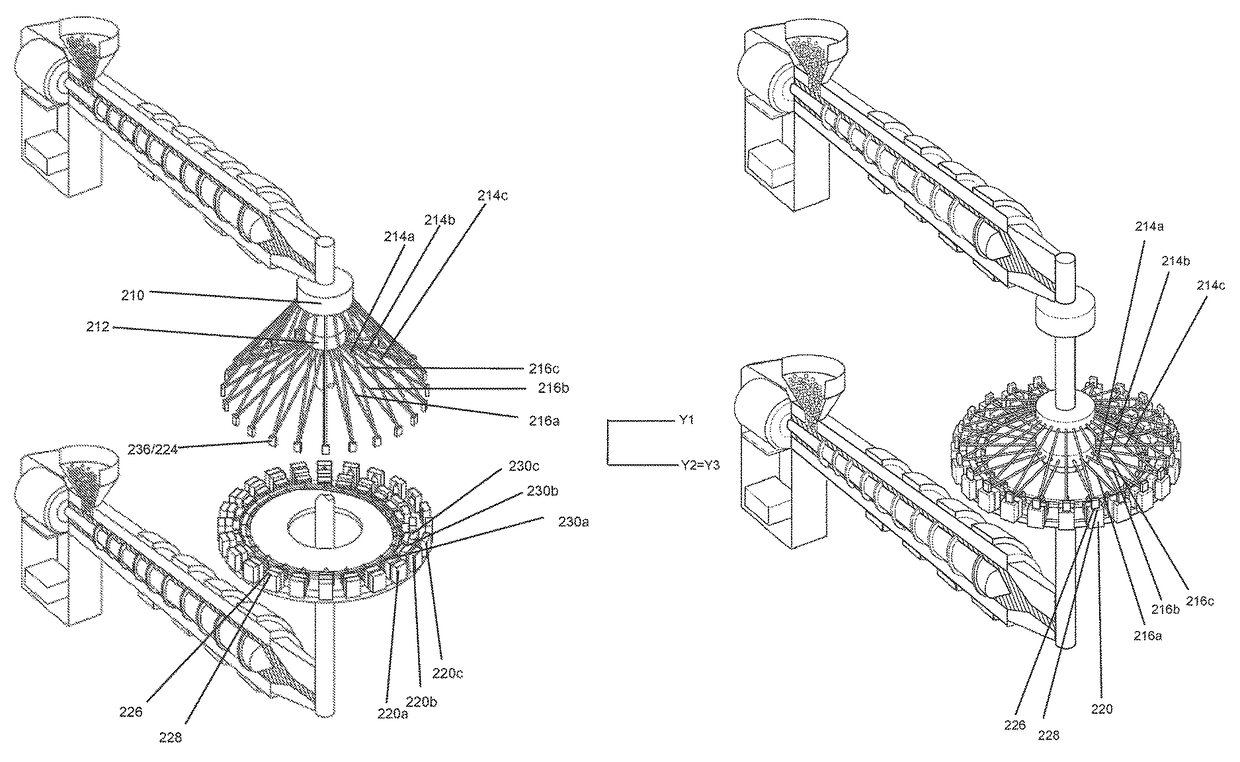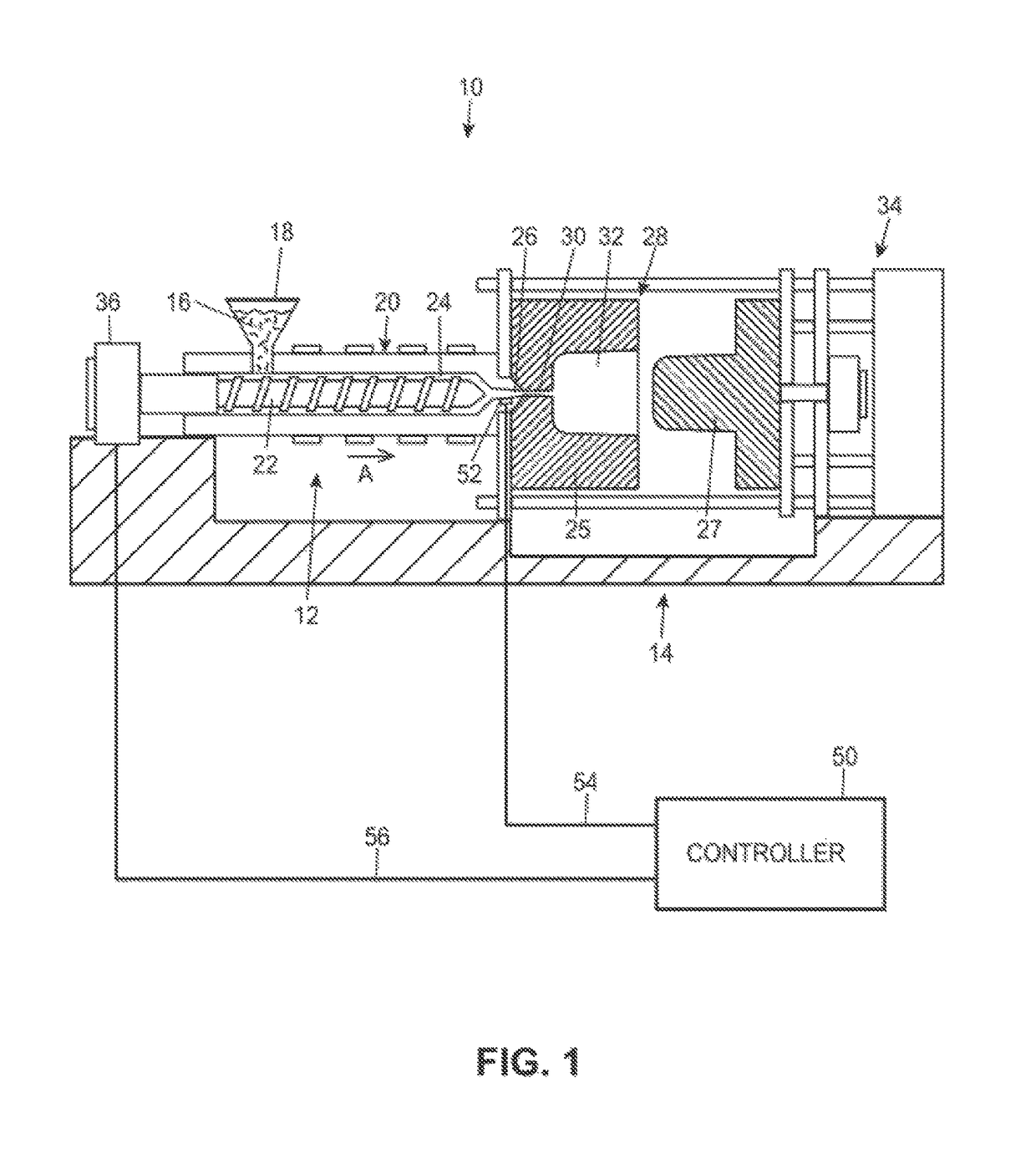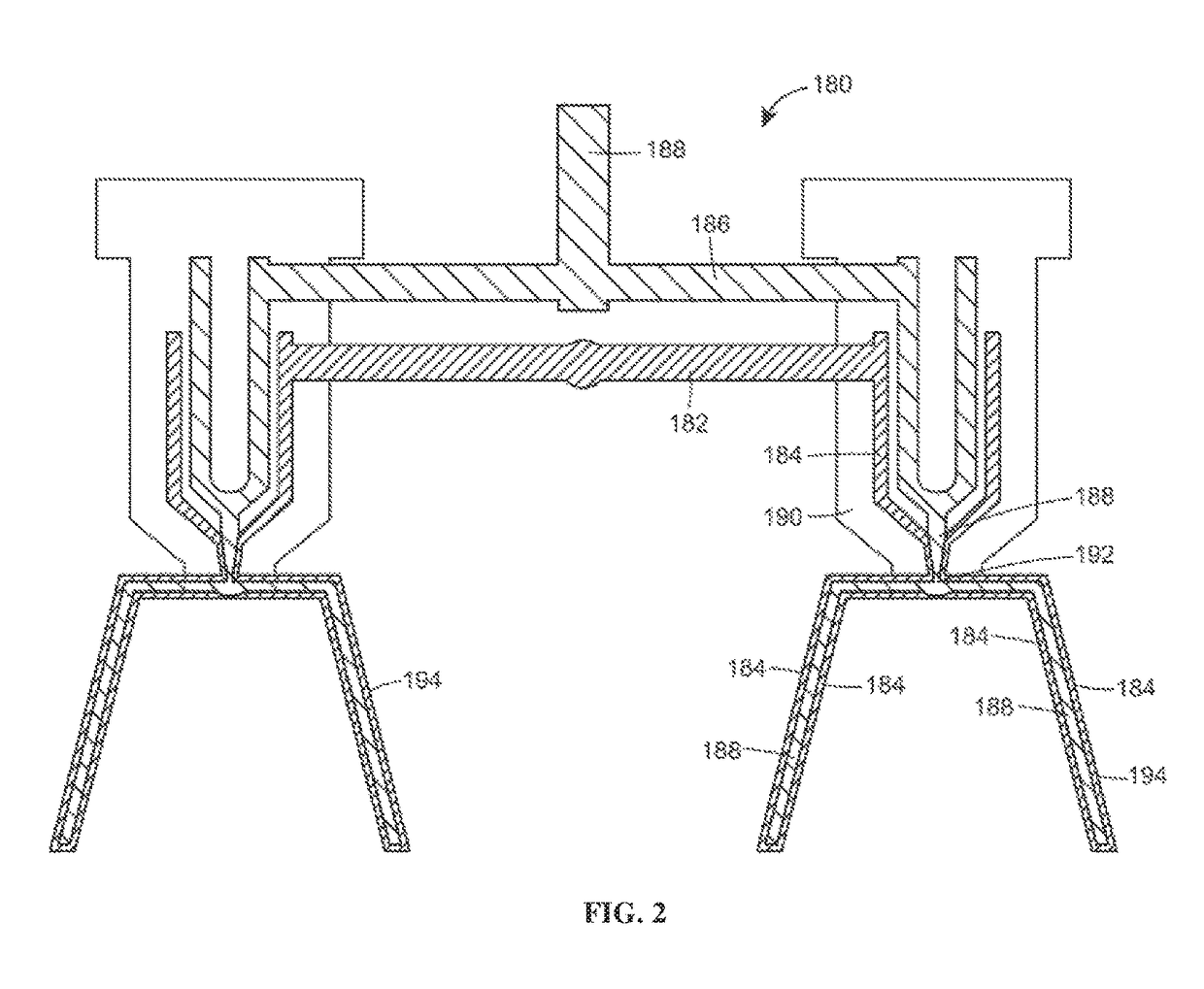Co-injection with continuous injection molding
a technology of injection molding and continuous injection, applied in the field of injection molding systems, can solve problems such as inferior physical properties of materials, and achieve the effects of reducing cycle time, constant melt pressure, and increasing pressur
- Summary
- Abstract
- Description
- Claims
- Application Information
AI Technical Summary
Benefits of technology
Problems solved by technology
Method used
Image
Examples
Embodiment Construction
[0034]Embodiments of the present disclosure can use any and all embodiments of materials, structures, and / or features, methods, and materials for injection molding at substantially constant pressure as disclosed in the following US patent applications:
[0035]U.S. patent application Ser. No. 13 / 476,045, entitled Apparatus and Method for Injection Molding at Low Constant Pressure, U.S. patent application Ser. No. 13 / 601,307, entitled Apparatus and Method for Injection Molding at Low Constant Pressure, U.S. patent application Ser. No. 13 / 476,047, entitled Alternative Pressure Control for a Low Constant Pressure Injection Molding Apparatus, U.S. patent application Ser. No. 13 / 774,571, entitled Injection Molding System Having Simplified Cooling, U.S. patent application Ser. No. 13 / 476,073, entitled Non-Naturally Balanced Feed System for an Injection Molding Apparatus, Ser. No. 13 / 476,197, entitled Method for Injection Molding at Low, Substantially Constant Pressure, Ser. No. 13 / 476,178, e...
PUM
| Property | Measurement | Unit |
|---|---|---|
| thickness | aaaaa | aaaaa |
| thicknesses | aaaaa | aaaaa |
| melt pressures | aaaaa | aaaaa |
Abstract
Description
Claims
Application Information
 Login to View More
Login to View More - R&D
- Intellectual Property
- Life Sciences
- Materials
- Tech Scout
- Unparalleled Data Quality
- Higher Quality Content
- 60% Fewer Hallucinations
Browse by: Latest US Patents, China's latest patents, Technical Efficacy Thesaurus, Application Domain, Technology Topic, Popular Technical Reports.
© 2025 PatSnap. All rights reserved.Legal|Privacy policy|Modern Slavery Act Transparency Statement|Sitemap|About US| Contact US: help@patsnap.com



